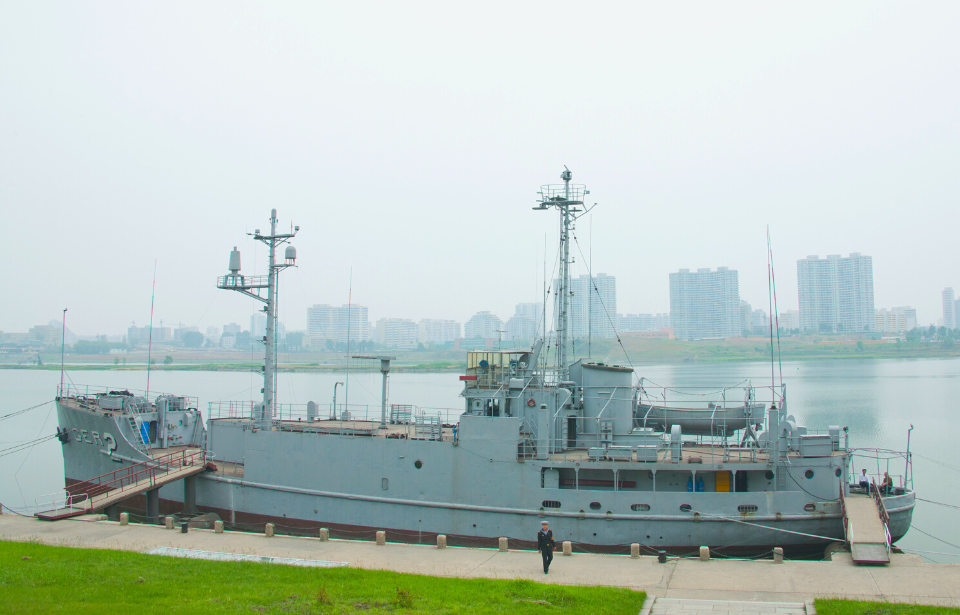The USS Pueblo (AGER-2) was taken by the enemy during a time when the US military was deeply involved in the Vietnam War. The United States, hesitant to become involved in yet another conflict, left the crew to grapple with the consequences. They endured a challenging 11 months in captivity, facing harsh treatment at the hands of the North Koreans, but ultimately succeeded in securing their return home. Unfortunately, the ship remains in captivity to this day.
The USS Pueblo prior to becoming a spy ship
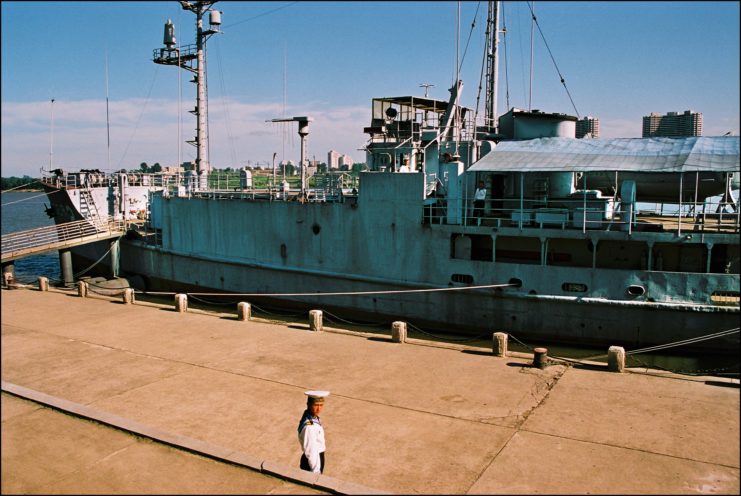
The Banner-class cargo ship FP-344/FS-344, originally constructed in 1944 for the US Army, entered service in April 45 under the operation of the US Coast Guard. Her primary function was the training of civilians bound for Army service, and she stayed within this role until 1954, when she was retired from active duty.
More than a decade later, the vessel underwent a significant transformation, assuming the new identity USS Pueblo and being reclassified as AKL-44. Her purpose shifted to that of a light cargo ship, before undergoing further modifications to serve as an environmental research vessel, designated as AGER-2.
In this new capacity, Pueblo was tasked with gathering intelligence for both the Office of Naval Intelligence (ONI) and the National Security Agency (NSA).
North Korea captures the USS Pueblo
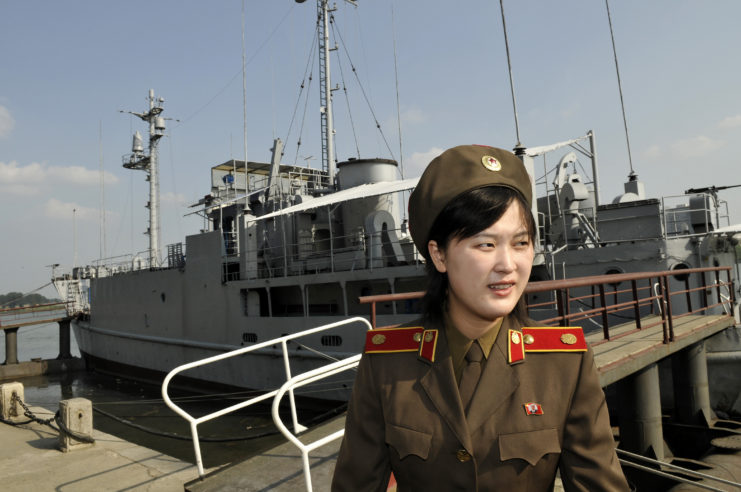
By 1967, the USS Pueblo had completed shakedown training and was ready to embark on her maiden spy mission. Leaving port on January 5, 1968, the ship was tasked with gathering intelligence on North Korea and the Soviet Navy. Eleven days later, Pueblo arrived at the 42nd parallel, in preparation for a patrol along the North Korean coast. The aim was to do so without getting closer than 13 nautical miles from the coastline.
On January 23, 1968, Pueblo was attacked by North Korea. She was detected by a submarine chaser, which ordered the spy ship to either stand down or be fired upon. In response, her crew attempted to turn away, but as Pueblo was significantly slower than the North Korean vessel, this wasn’t possible.
Before everyone onboard the spy ship knew it, the enemy vessel was joined by four torpedo boats, an additional submarine chaser and two Mikoyan-Gurevich MiG-21s. Pueblo was largely unarmed, aside from a few handguns and a pair of M2 Browning .50 caliber machine guns; her crew was unprepared for the assault. Despite this, they refused to allow the North Koreans aboard, and when escorted to the port city of Wonsan destroyed as much sensitive material as they could.
The crewmen’s attempts to destroy the top secret documents resulted in Pueblo reducing her speed, something that was punished. The North Koreans fired a 57 mm cannon and several machine guns toward the spy ship, causing damage to the vessel and killing one of the 83 sailors onboard, Duane Hodges. Along with Hodges, the enemy fire also injured two others, including US Marine Corps Sgt. Bob Chicca.
Eventually, the North Koreans were successful in boarding the ship. Each crew member was blindfolded, had their hands tied and beaten upon setting foot on land.
The American sailors were held captive for months
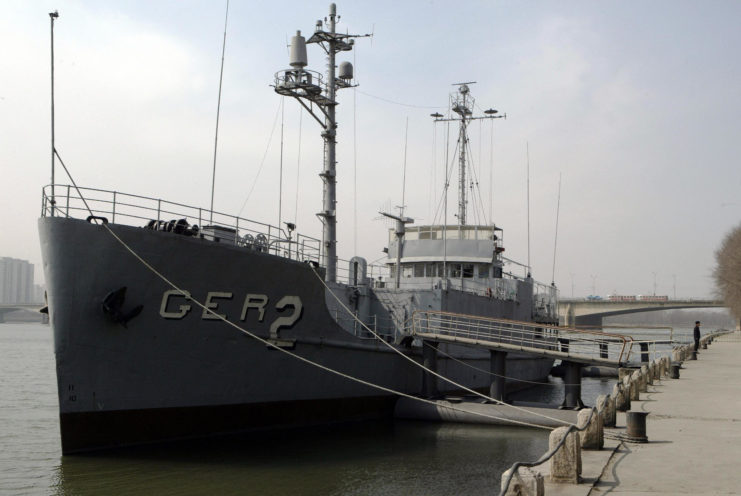
The USS Pueblo‘s crew managed to make radio contact with US forces stationed in South Korea during the attack, with Chicca explaining, “The last conversations we got over the radio were that help was on the way, and it obviously wasn’t. I could not believe that we would be abandoned out there the way we were.”
Pueblo‘s personnel were promised help from a squadron of McDonnell Douglas F-4 Phantom IIs, but the fighters never came. Instead, the remaining 82 crewmen were taken prisoner and held for 11 months, suffering constant torture at the hands of their captors. “We were an experiment that was deemed, I don’t know whether it would be a failure, but it certainly didn’t work,” said Chicca.
After months of psychological torture, the North Koreans did manage to get the confession they were searching for. Commanding officer Lloyd Bucher admitted they’d intruded on the country’s territorial waters and committed hostile acts. However, he only said this after their captors threatened to kill each of the crewmen one-by-one.
Signing the three A’s document

As aforementioned, the US was still heavily engaged in the Vietnam War when the USS Pueblo was captured. Not wanting to start another war with North Korea, government officials felt they needed to approach the situation through negotiations. Exactly 11 months after the capture of Pueblo, both countries came to an adequate resolution to ensure the safe release of the crewmen.
On December 23, 1968, US Army Maj. Gilbert Woodward signed what became known as the three A’s document. Drafted by the North Korean government, it stated that the US would admit to committing wrongdoing, apologize for the transgression and assure such a thing would never happen again.
The men were ultimately released and returned home to the US, while Pueblo remained in North Korea. After being exhibited in Wonsan and Hŭngnam, she was eventually relocated to the Victorious Fatherland Liberation War Museum in the capital city of Pyongyang.
The USS Pueblo is still held captive
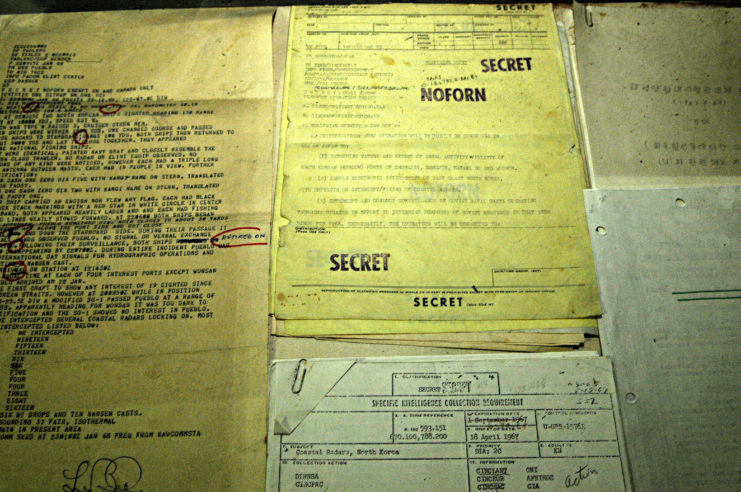
When captured by North Korea, Pueblo had 10 encryption machines and thousands of top secret documents onboard, all of which were confiscated by the North Korean government. The incident is considered one of the largest losses of intelligence in modern history.
Despite being held captive, the US Navy technically still owns the spy ship, which is now one of the service’s oldest operating vessels, as it’s still considered to be active. She’s since been turned into a tourist attraction and undergoes regular maintenance, which included a new paint job to commemorate the anniversary of the Korean War.
More from us: IJN Shinano: The Largest Warship Ever Sunk By a Submarine
When President Donald Trump added North Korea as a state sponsor of terrorism in 2017, survivors and the families of deceased sailors from Pueblo were able to sue the country under the Foreign Immunities Act. From this, they were awarded $2.3 billion in 2021, but no one knows how or if they’ll receive their compensation.
